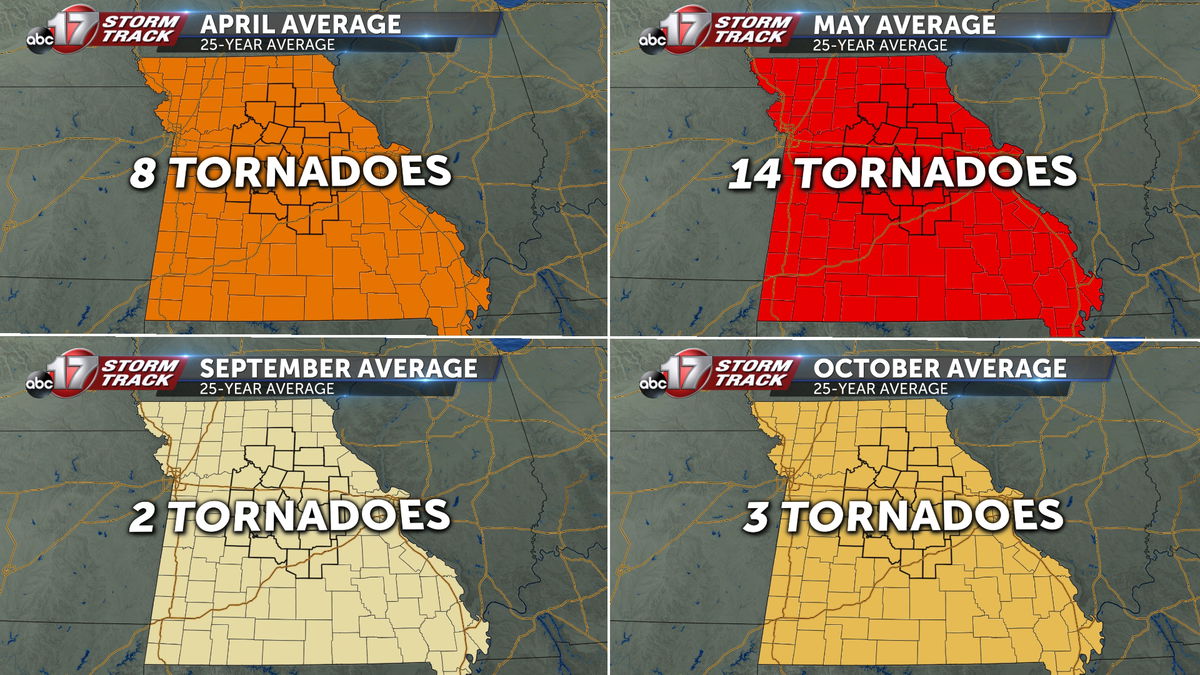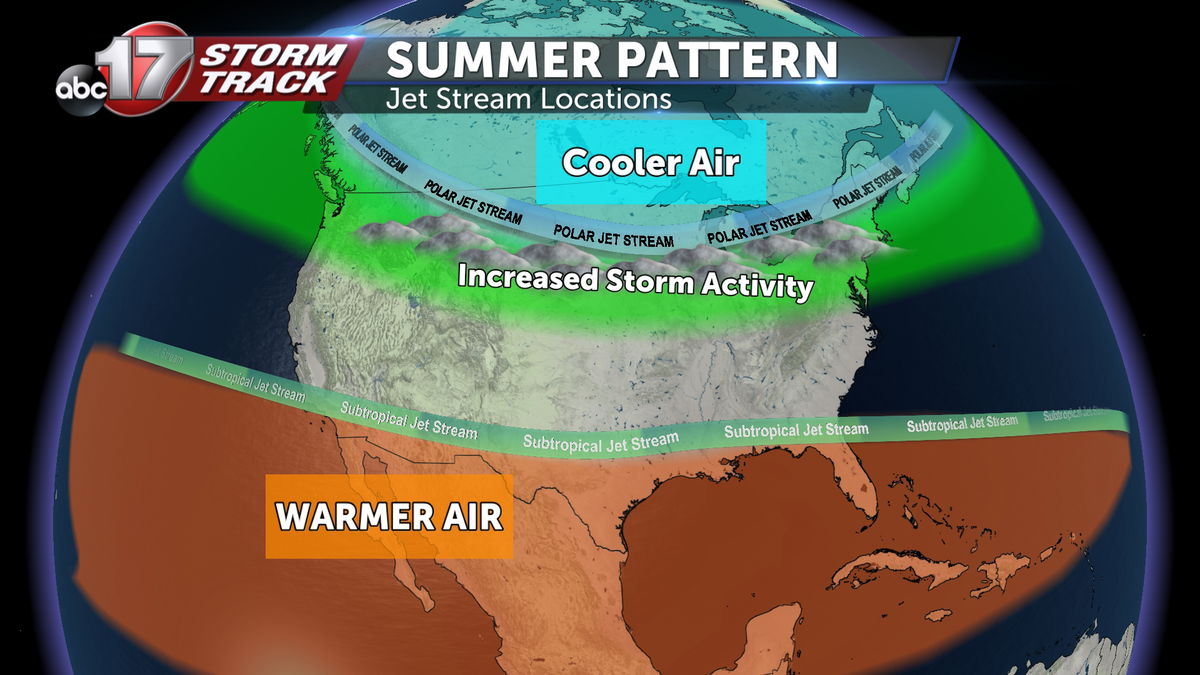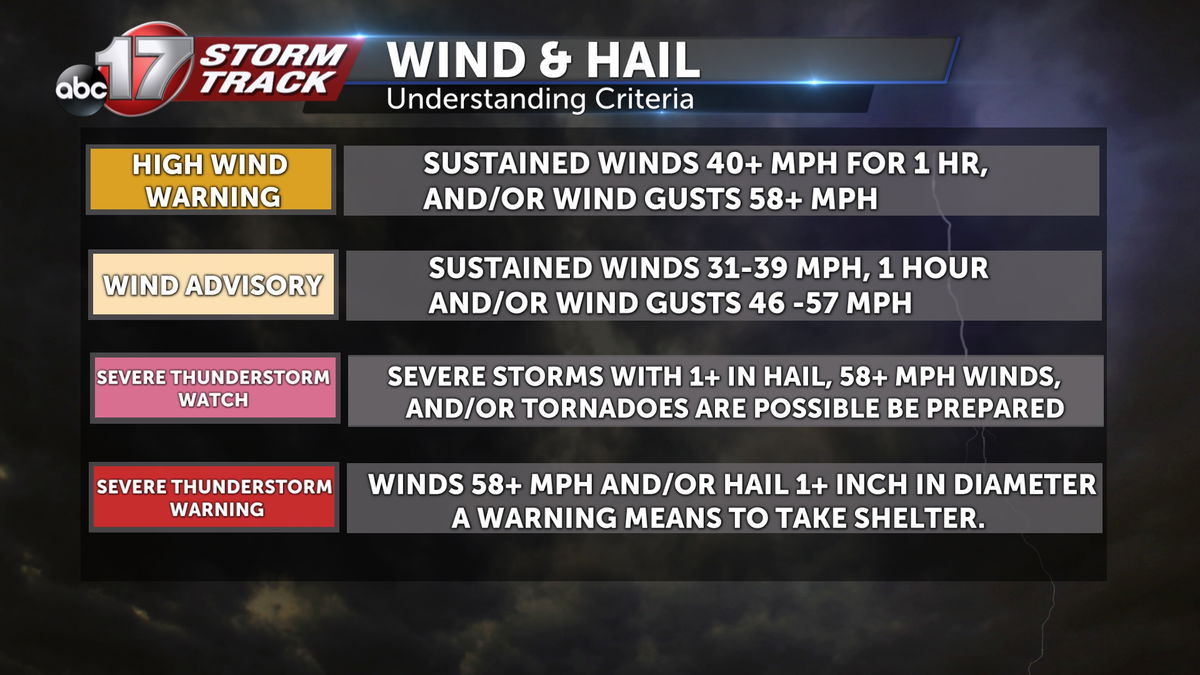Fall severe weather season arrives
Although things are looking quiet going into the next week for weather conditions, thats not always the case for Mid-Missouri going into the months of September and October. A secondary severe weather season can occur due to the changing of the seasons.

April and May have the highest average of tornadoes seen over the past 25 years across the state. We see a secondary spike during the September and October months. Thankfully, the averages fall by well over half as those seen in the spring months. This is due to a more stable environment seen during the fall months.

The reasoning for the uptick in the secondary severe weather season lies within the location of the polar jet stream. Typically, air north of this jet stream remains cooler than the air to the south. During the summer months, the polar jet stream remains far north back towards Canada increasing storm activity along and just south of its location.

During the winter months, this polar jet stream moves south back towards southern states in the United States. This means during the fall months for Missouri, the polar jet stream remains just to the north of the region leading to a more unstable meeting of two air masses leading to a surge of storm activity.

With the threat of strong to severe storms on the rise the next two months, it's important to understand the difference between severe weather warnings and watches. Watches mean there are possible ingredients for severe storms to take place. The active severe weather storms are expected during this time period.
A severe thunderstorm warning means one has been confirmed and it is currently moving through an area. Shelter should be taken during warnings and you should wait and watch for weather updates.
Storms become severe once they produce hail up to or greater than 1" in diameter, and winds up to or greater than 58 mph. Tornadoes are also a possibility within many of these storms and if conditions worsen, then a tornado warning could be issued.
